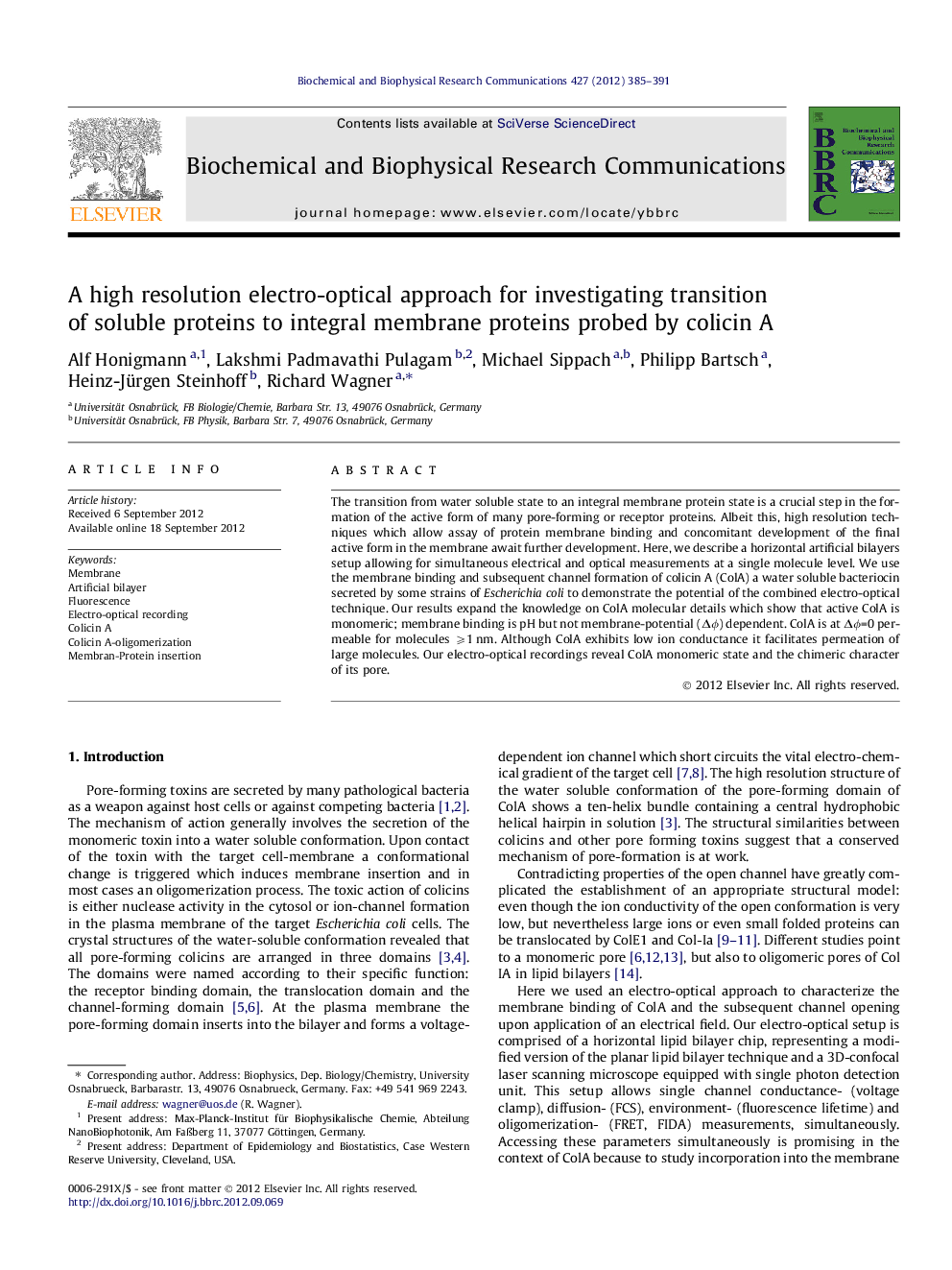| Article ID | Journal | Published Year | Pages | File Type |
|---|---|---|---|---|
| 1929244 | Biochemical and Biophysical Research Communications | 2012 | 7 Pages |
The transition from water soluble state to an integral membrane protein state is a crucial step in the formation of the active form of many pore-forming or receptor proteins. Albeit this, high resolution techniques which allow assay of protein membrane binding and concomitant development of the final active form in the membrane await further development. Here, we describe a horizontal artificial bilayers setup allowing for simultaneous electrical and optical measurements at a single molecule level. We use the membrane binding and subsequent channel formation of colicin A (ColA) a water soluble bacteriocin secreted by some strains of Escherichia coli to demonstrate the potential of the combined electro-optical technique. Our results expand the knowledge on ColA molecular details which show that active ColA is monomeric; membrane binding is pH but not membrane-potential (Δϕ) dependent. ColA is at Δϕ=0 permeable for molecules ⩾1 nm. Although ColA exhibits low ion conductance it facilitates permeation of large molecules. Our electro-optical recordings reveal ColA monomeric state and the chimeric character of its pore.
► A bilayer technique for single molecule electro-optical recording is presented. ► Transition of ColA from the water-soluble into the membrane state was investigated. ► Active ColA is monomeric; membrane binding is not membrane potential (Δϕ) dependent. ► ColA is at Δϕ = 0 permeable for molecules with diameters ⩾1 nm. ► We disclose the monomeric state of active ColA and chimeric character of its pore.
